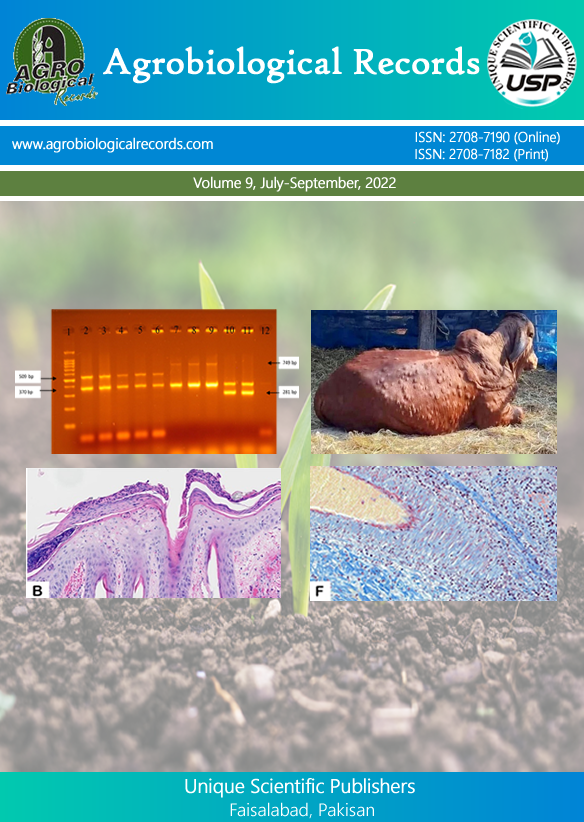
Muhammad Arslan Aslam *1, Abdul Saboor 2, Azhar Shabbir Ather 1, Muhammad Bilal 3, Nauman Rafique 4, Saba Mehnaz *4, Shahbaz Ul Haq 5 and Anum Ashraf 1
1Department of Clinical Medicine and Surgery, Faculty of Veterinary Science, University of Agriculture, Faisalabad, Pakistan 2Department of Veterinary Surgery, Faculty of Veterinary Science, University of Veterinary and Animal Sciences, Lahore, Pakistan 3Department of Pathology, Faculty of Veterinary Science, University of Agriculture, Faisalabad, Pakistan 4Department of Parasitology, Faculty of Veterinary Science, University of Agriculture, Faisalabad, Pakistan 5Key Laboratory of New Animal Drug Project, Gansu Province, Key Laboratory of Veterinary Pharmaceutical Development, Ministry of Agriculture and Rural Affairs, Lanzhou Institute of Husbandry and Pharmaceutical Sciences of Chinese Academy of Agriculture Sciences, Lanzhou, China
*Corresponding author: drmarslan3@gmail.com (MAA), sabamehnaz2012@gmail.com (SM)
Photochemical tissue bonding (PTB) is considered to be used in surgery to enhance healing of cutaneous wounds and to minimize the complications i.e., wound dehiscence, inflammatory reactions, and infections affecting animal health. The aim of this study is to analyze the wound healing process by using PTB and cyanoacrylate-based tissue adhesive. The results showed that PTB group had quicker healing time, good healing score and stronger tensile strength for incisional wounds of rabbits. However, Vetbond group showed delayed healing, poor healing score, and weaker tensile strength. The 14-days post-surgery PTB treated rabbits cutaneous layers were stained with hematoxylin and eosin stain. The histological examinations of these cutaneous specimens revealed higher thicknesses (μm) of regenerated Epidermal, Dermal and Hypodermal layers, collagen fibers, and epithelial ridges. Whereas, for 14 days Vetbond treated rabbits cutaneous layers showed less thickness of these cutaneous layers, degenerated collagen fibers and no ridges. In future, large-scale analysis of combined suture less technique is required to enhance wound healing processes.